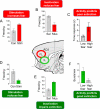Fear extinction as a model for translational neuroscience: ten years of progress
- PMID: 22129456
- PMCID: PMC4942586
- DOI: 10.1146/annurev.psych.121208.131631
Fear extinction as a model for translational neuroscience: ten years of progress
Abstract
The psychology of extinction has been studied for decades. Approximately 10 years ago, however, there began a concerted effort to understand the neural circuits of extinction of fear conditioning, in both animals and humans. Progress during this period has been facilitated by a high degree of coordination between rodent and human researchers examining fear extinction. Here we review the major advances and highlight new approaches to understanding and exploiting fear extinction. Research in fear extinction could serve as a model for translational research in other areas of behavioral neuroscience.
Figures






References
-
- Andreano JM, Cahill L. Sex influences on the neurobiology of learning and memory. Learn. Mem. 2009;16:248–66. - PubMed
Publication types
MeSH terms
Grants and funding
LinkOut - more resources
Full Text Sources
Other Literature Sources
Medical

